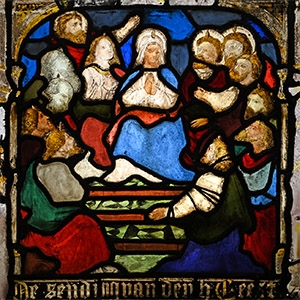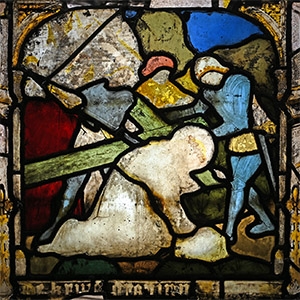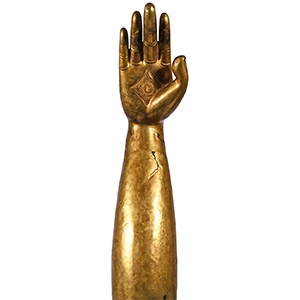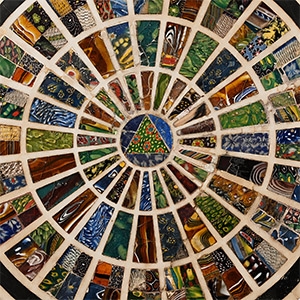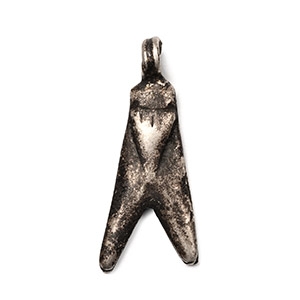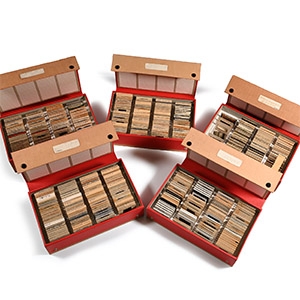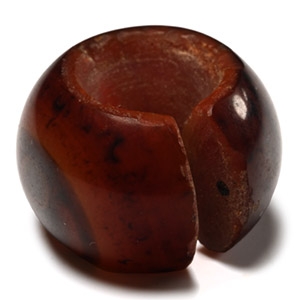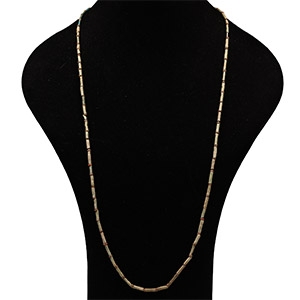Home > Auctions > 3 - 11 June 2025
Ancient Art, Antiquities, Books, Natural History & Coins
From a war-damaged church in Belgium.
Ex property of a late Northumberland collector.
From a private collection, Derbyshire, UK.
This lot is accompanied by an illustrated lot declaration signed by the Head of the Antiquities Department, Dr Raffaele D'Amato.
Cf. similar image in Studenbuch der Maria von Burgund, Österreichische Nationalbibliothek, Wien, cod.1857 folio 50v.
The scene represents the Christian feast of the Pentecost, described in Acts, 2,1-4, when the eleven Apostles, gathered in Jerusalem together with Mary Mother of God and Mary of Magdala (the latter only according to some traditions) received the Holy Spirit as a mighty rushing wind and under the form of tongues of fire. According to the Christian tradition, this event represents the fulfilment of the promise that Christ will baptise his followers with the Holy Spirit and fire.
From a war-damaged church in Belgium.
Ex property of a late Northumberland collector.
From a private collection, Derbyshire, UK.
This lot is accompanied by an illustrated lot declaration signed by the Head of the Antiquities Department, Dr Raffaele D'Amato.
Cf. similar images in the 15th century Flemish painting ‘De kruisdraging van Christus’, Bosch, 1498, in Madrid, Royal Palace, in Graham Hitchins, S., Art as History, History as Art, Jeronimus Bosch and Pieter Bruegel the Elder assembling knowledge not setting puzzles, 2014, Nijmegen, figs.19, 20.
The scene represents the tragic moments of the Passion according to the Christian tradition, when Jesus succumbed under the weight of the cross. The episode is not in the Gospels, however, in the three synoptics it is noted that the three soldiers requested Simon of Cyrene to carry the cross in place of Jesus. Interestingly, the artist here painted the soldiers in contemporary armour (sallet, complete armour for breast, arms and legs), giving a good chronological element for the dating.
From a war-damaged church in Belgium.
Ex property of a late Northumberland collector.
From a private collection, Derbyshire, UK.
This lot is accompanied by an illustrated lot declaration signed by the Head of the Antiquities Department, Dr Raffaele D'Amato.
Cf. similar image in National Gallery of Art, The Agony in the Garden, accession no. A26289, 15th century painting.
The scene represents the last prayer of Jesus before the Passion. According to the Gospel of Luke (22:43-44[1]) Jesus prayed in a farm known as Gethsemane on the Mount of Olives, and received consolation from an angel afterward, before the betrayal of Judas and his arrest. This event can be considered as the first true Passion of Jesus.
Ex Sheila Allen, London.
Private collection, London.
This lot has been checked against the Interpol Database of stolen works of art and is accompanied by a search certificate number no.12742-236277.
This lot has been cleared against the Art Loss Register database, and is accompanied by an illustrated lot declaration signed by the Head of the Antiquities Department, Dr Raffaele D'Amato.
3RD CENTURY B.C.-2ND CENTURY A.D. AND LATER
Lady Walston, Newton Hall, Newton, Cambridgeshire.
The collection of Mr Edric Van Vredenburgh.
with Sotheby’s, London, The Eclectic World of Edric Van Vredenburgh, 6 June 2006, no.97.
British private collection.
This lot has been checked against the Interpol Database of stolen works of art and is accompanied by a search certificate number no.12743-235193.
This lot has been cleared against the Art Loss Register database, and is accompanied by an illustrated lot declaration signed by the Head of the Antiquities Department, Dr Raffaele D'Amato.
See Martine S. Newby, Francesco Sibilio and the Re-use of Ancient Roman Glass in the 19th century, Alvar Gonzalez-Palacios, Lavori di Sibilio, L'Armadio Delle Meraviglie, Milan, 1991, p.86.
From an early 20th century collection.
This lot is accompanied by an illustrated lot declaration signed by the Head of the Antiquities Department, Dr Raffaele D'Amato.
Cf. Andrews, C., Amulets of Ancient Egypt, London, 1994, pp.62-3.
Property of archaeologist Stephanie Gee, N.W. London, UK, 1960s-1980s.
This lot is accompanied by an illustrated lot declaration signed by the Head of the Antiquities Department, Dr Raffaele D'Amato.
Stephanie Gee was a prominent archaeologist who took part in several expeditions in Egypt. She was a trusted assistant to the British-Australian archaeologist Veronica Seton-Williams, who excavated in Egypt, Britain, and the Near East. Stephanie also took part in the Tell El-Farâ'în expeditions of 1965-1968, and assisted Seton-Williams with preparing the 1966 expedition report. Their collaboration continued and Stephanie helped with the manuscript of Seton-Williams’ book ‘The Road to El-Aguzein’, a narrative account of her life that was first published in 1988.
Ex early 20th century collection, London and Home Counties, UK.
This lot is accompanied by an illustrated lot declaration signed by the Head of the Antiquities Department, Dr Raffaele D'Amato.
See Andrews, C., Ancient Egyptian Jewellery, London, 1990, p.116, no.96k, for the style.
Acquired on the UK art market, circa 1980.
Property of an East London, UK, collector.
This lot is accompanied by an illustrated lot declaration signed by the Head of the Antiquities Department, Dr Raffaele D'Amato.
From an early 20th century collection.
This lot is accompanied by an illustrated lot declaration signed by the Head of the Antiquities Department, Dr Raffaele D'Amato.
Cf. Andrews, C., Amulets of Ancient Egypt, London, 1994, pp.62-3.
Egyptian artists often depicted fly whisks with pharaohs and officials, suggesting flies were just nuisances. In reality, Egyptians valued flies for their speed and persistence. Small fly amulets appeared around 3200 B.C. in Naqada II burials, gaining popularity and varying materials during the New Kingdom, including gold, silver, lapis lazuli, carnelian, amethyst, faience, and gemstones. These amulets were thought to protect against insect bites and troublesome creatures via apotropaic magic and possibly symbolised fecundity. Pharaohs awarded gold fly-shaped pendants to honour soldiers' bravery in battle.
Acquired in the 1990s.
Ex Abelita family collection.
This lot is accompanied by an illustrated lot declaration signed by the Head of the Antiquities Department, Dr Raffaele D'Amato.
From a central London collection, formed 1980-2000.
From the private collection of Mr David Barker, London, UK; thence by descent.
This lot is accompanied by an illustrated lot declaration signed by the Head of the Antiquities Department, Dr Raffaele D'Amato.
Cf. Metropolitan Museum of Art inv. no. 23.6.78, for a similar figurine in a shrine niche.
The rectangular limestone plaque almost certainly represents a shrine. Such plaques first appeared in Lower Egypt and became widespread in the Late Period and Ptolemaic era. They may have developed from earlier female figurines depicted on beds and are usually associated with the female goddesses Isis and Hathor, both powerful protectors of women and childbirth and associated with fertility.
229 - 240 of 3130 LOTS

